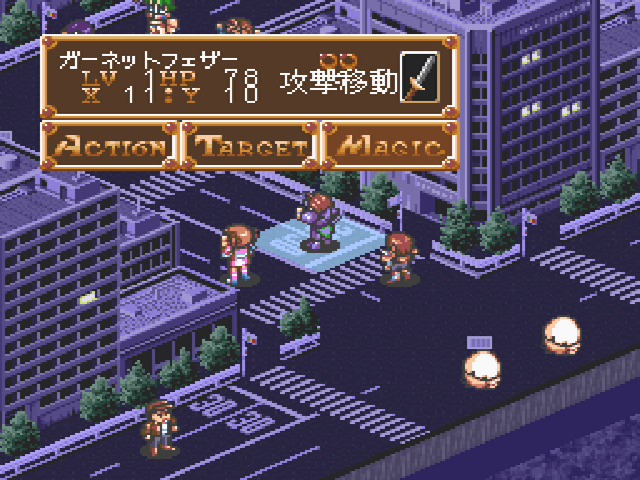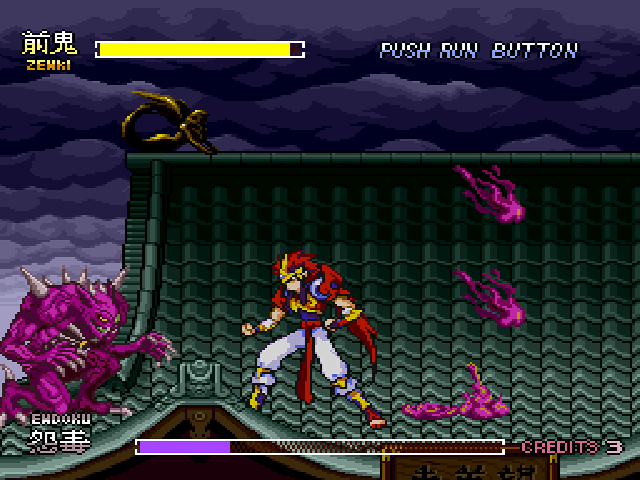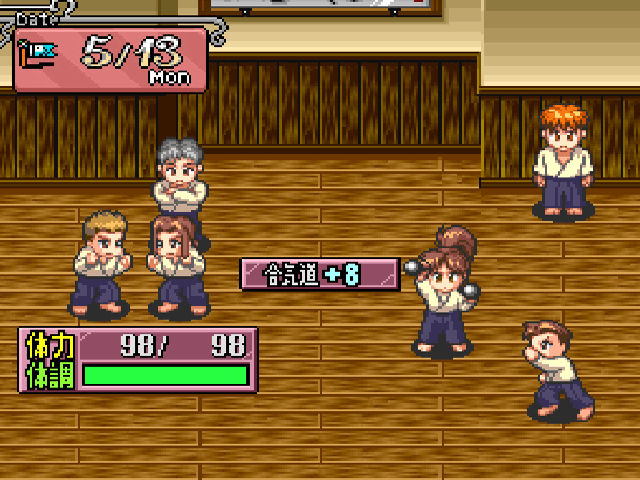PC-FX
Top 10 Best PC-FX Games of All Time!
The PC Engine (TurboGrafx-16) was a huge success for NEC. It took the wind out of the Famicom’s sales and outperformed Sega in Japan during the 16-bit era. The PC-FX was the successor to the PC Engine, but it was a commercial failure for a number of reasons. The PC-FX was proposed in 1992, but it didn’t come to market until the end of 1994. The console was woefully unprepared to compete with the newly-released Sega Saturn and Sony PlayStation, and its outdated processor wasn’t designed with polygonal graphics in mind. The system’s biggest selling point was its uncanny ability to display 30 JPEG images per second. This was essentially a form of Motion JPEG that easily eclipsed the playback quality of competing 5th-generation consoles. In an effort to highlight this unique feature, NEC put a moratorium on the franchises that helped make the PC Engine a success. Hudson Soft was prohibited from bringing Bomberman or Bonk to the console, and they were instead encouraged to develop games based on existing anime franchises that could show off the system’s video capabilities. This bold strategy did not pay off, but it did result in a number of quirky games that can’t be found elsewhere.
10
Blue Breaker
1996

Blue Breaker is one of many games on the PC-FX that combines RPG gameplay and dating sim elements. This style of game became fairly prominent in Japan in the 1990s, but Blue Breaker is one of the earliest examples. The battles are automated for the most part, but you do have the option of giving instructions to your other party members. The main character has separate “save the world” and “find a bride” goals, and any girl in the game can become a member of your party. The girls’ feelings toward you will change in accordance to your play style, and this is where the game becomes interesting. If you order them around too often in battle, they will respond negatively. If you let them die in battle, they really won’t be happy. If you perform poorly or run from battle, they’ll also respond negatively. What the heck!? They blame you when you fail, they blame you when they fail. Can’t they accept any responsibility for their own lives? If you fight too many battles in a day, they’ll get mad at you. If you don’t fight enough battles in a day, they’ll get mad at you. If you group two girls together who don’t like each other, they’ll get mad at you. Sometimes, the girls will be pissed off for no reason at all, but everything is your fault. It’s kind of infuriating and the player doesn’t get a lot of feedback, but the game is pretty rewarding once you figure out what to do. Blue Breaker is a unique game that probably deserves more love than it got. Nobody played the PC-FX version and the subsequent Saturn and PlayStation ports were overshadowed by games like Grandia and Final Fantasy VII.
9
Super Power League FX
1996

Super Power League FX is a baseball game and the only sports title available on the PC-FX. It’s disappointing from a technical standpoint. You’ll almost certainly want to play with the volume turned down, and the game’s visuals are a mixed bag. The swinging animations are pretty impressive and each player has their own look, but the colors are washed out, the field is ugly, and the use of polygonal graphics in the animated intro was laughable. I actually prefer the graphics in the PC Engine and Super Famicom versions. The game is perfectly playable, though, and I really appreciate how fast things move. Baseball can be a very slow-moving sport, but Super Power League FX is fast-paced despite its reputation of being one of the more realistic baseball games of its day. The game allows you to play a single game or race for the pennant. There’s also a training mode and you have the option of creating your own teams and recruiting players. The game features real players and teams from the Nippon Professional Baseball league. Most people reading this list are likely to be completely unfamiliar with any of them, but I guess fans of the 1995 Yakult Swallows will probably appreciate it. Super Power League FX has it’s flaws, but it’s still enjoyable. It would be pretty hard to mess up a baseball game completely.
8
Sparkling Feather
1997

Sparkling Feather blends elements from RPGs, strategy games, and dating sims together into a collection of weirdness. The game follows the exploits of a regular high school boy who is destined to fight evil and protect his futuristic city from ancient demons. The battles are fairly large-scale and the action takes place on an isometric grid-based map. (The combat is somewhat reminiscent to Persona on the PlayStation, if you need a frame of reference.) Even though the game throws a lot of enemies at the player, things never become overly tedious because the characters have a lot of personality. After being positioned to attack, your party members will sometimes protest on the grounds that they are too scared or tired. Between battles, players can win a chance to date a random character from a pool that includes both females and males. The player’s choices of conversation topics will ultimately allow them to gain favor with their companion. The game sounds pretty derivative, but I appreciate its randomness and sense of humor. A sequel was planned for the PC-FX, but it never saw the light of day.
7
Choujin Heiki Zeroigar
1997

Seemingly every second game released for the PC Engine was a shooter, so it’s surprising that only one was made for the PC-FX. Choujin Heiki Zeroigar isn’t perfect, but beggars can’t be choosers and there is a lot to like about it. There are over a dozen weapon upgrades to obtain, players have a shield that effectively eliminates one-hit deaths, and the scoring system actually has a reason for existing since you level up after reaching a certain number of points. The game also features a number of large bosses, and the action never slows down no matter how many sprites are on screen. Unfortunately, the game simply can’t compete with top-tier shoot ’em ups from the 8-and-16-bit eras. The overall design is pretty bland and the game simply doesn’t push the hardware as far as it could. Having said that, it does feature a number of impressive animated cutscenes that play before, after, and during each stage. The animation quality is pretty impressive, and some last for as long as 15 minutes! Those interested in the “giant robot” genre might view the anime scenes as an incentive to keep playing, but players have the option to skip them entirely if they just want to get straight to the action. It has its flaws, but I’m glad that Zeroigar exists. It would have been just plain wrong if the successor to the PC Engine didn’t have a single shooter.
6
Dragon Knight 4
1997

Dragon Knight 4 is a tactical, turn-based RPG that puts players in control of up to nine characters on a grid-based battlefield. The characters fall into one of several distinct classes, including swordsmen, archers, sorcerers, and barbarians among others. A character’s class determines their strength and range in battle and also dictates what armor and weaponry can be equipped. There are many characters that can be recruited during the game, and it’s a lot of fun to build up your party between battles. The main character has an affinity for naked elf girls and the women that you help during your adventure will sometimes express their gratitude by disrobing, but the game is relatively tame and many of the more graphic scenes from the original PC-98 version were censored in the PC-FX port. Stripping away the adult content from Dragon Knight 4 is a little like reading Playboy for the articles, but it does prove that the game can stand on its own merits.
5
Kishin Douji Zenki: Vajura Fight
1995

Zenki is a manga and anime that spawned five video games on various platforms. Vajura Fight is easily the best Zenki game ever made and one of the few that makes effective use of the PC-FX hardware. Vajura Fight is a side-scrolling beat ’em up that feels like a faster version of Final Fight. One of the strong points of the PC-FX was its ability to play high quality full-motion video. Instead of using FMV exclusively for cinematic cutscenes, Vajura Fight seamlessly uses FMV effects during gameplay to create graphical effects that would be impossible to render in real-time. One such effect involves the background suddenly shattering like glass while your character is transported to another dimension. A cool FMV effect is also used when Zenki changes into his demon form. The character sprites are large and well-animated, the enemies are interesting, and the stages are surprisingly varied. You’ll fight the grim reaper on the top of a moving subway car, jump from one falling beam to another on a construction site, and tussle with a giant Battletoad mecha in a playground. The coolest stage has players running away from a transforming car and eventually luring him into a crushing machine. Vajura Fight is one of the most sought after games on the PC-FX so it could be very expensive to obtain. You’ll likely want to buy a second controller too, since it’s one of the few two-player games on the system.
4
Fire Woman Matoi Gumi
1997

Equal parts RPG and dating sim, Fire Woman Matoi Gumi revolves around a male transfer student who is drafted into an all-female peacekeeping group after demonstrating an act of bravery. For the rest of the school year, you’ll roam the campus after class and unleash your own brand of vigilante justice on bullies and hooligans. Between battles, players can improve their stats by joining various clubs. The boxing club will increase your fighting abilities and teach you new moves, but you’ll also be able to partake in tennis, cheerleading, and many other activities. If learning martial arts isn’t your thing, you can choose to spend your time studying in the library or the chemistry lab. By visiting the computer lab, players will be able to hone their fighting skills in a simulation. The battle system lets players pre-select from six different maneuvers which are then chained together automatically. There are a number of creative moves to learn throughout the year, including one that drops cages from the sky and an energy blast that obliterates anyone in your vicinity. Dating plays a role in the game, but the activities in Fire Woman Matoi Gumi are all G-rated in nature. You’ll exchange gifts, walk girls home, and protect them from harassment. There are 11 different girls to court in the game and 12 different endings to obtain (there’s a “forever alone” ending), so the replay value in Fire Woman Matoi Gumi is surprisingly high.
3
Der Langrisser
1996

Der Langrisser is an updated port of Langrisser II and arguably the best game in the series. Like many tactical RPGs, Der Langrisser lets players command battalions of soldiers against an opposing army. Different units have different purposes, the terrain can be used in strategic ways, and battles rely heavily on a rock-paper-scissors mechanic. It’s standard fare for the most part, but the Langrisser series stood out from other games in the genre due to its incredible scale. At times, you’ll have over 30 units in your command! Der Langrisser is also one of the first games in the genre to feature non-linear branching paths and multiple endings. The main character can join one of three factions, and the game makes all of them seem sympathetic. If they prefer, players can also start their own faction in opposition to the other three. There are a couple dozen missions to play through, but over 75 different scenario variants can occur depending on where the player’s allegiance lies. It really feels like the choices you make matter. Players are also given a questionnaire at the beginning of the game that helps determine their character’s initial stats. The PC-FX version of Der Langrisser makes use of the CD format with the addition of animated cutscenes and voice acting, but the best new feature is the “hard mode” that is presented after the game has been completed that includes a brand new script.
2
Megami Paradise II
1996

The first Megami Paradise was an RPG released exclusively for the PC CD, but the sequel is more of a comedic life sim. The premise involves dueling goddesses who each enlist four young shrine maidens to help them gain followers. After choosing a side to represent, players try to gain fame by walking around a vast city and striking poses. There are a lot of variables that determine how appealing they will be, so players have to keep an eye on their weight and manage their stress levels by eating right and getting proper exercise. There are 89(!) different outfits to wear in the game, including pyjamas, kimonos, nurse uniforms, and catsuits among others. Different outfits can help gain more followers, but their purposes often extend beyond the cosmetic. Leotards are necessary for working out, bathing suits are required for swimming, and formal wear is needed if you want to perform on stage at the comedy club. The sheer number of locations to visit is pretty impressive, and includes everything from convenience stores to TV stations. Many businesses are only open at certain times during the day, so time management is also a required skill. Players can win or lose followers by taking on opposing shrine goddesses in simple turn-based battles, but they almost feel like afterthoughts because there’s just so much to do and see in the game. Players will be able to try their hand at everything from disco dancing to watermelon-eating contests. There aren’t a lot of games that offer that much variety.
1
Chip-Chan Kick!
1996

The developer of Chip-Chan Kick! (Cybertech Custom) was known for making adult games. At first glance, Chip-Chan Kick! looks like it falls into that category as well. The animated intro is basically two minutes of hilariously contrived panty flashes, but the game itself is surprisingly innocent. A simple flip-screen platformer in the vein of Bubble Bobble or Rainbow Islands, Chip-Chan Kick! stars a couple of wide-eyed girls and supports two-player co-op gameplay. The goal in each stage is simply to clear the screen of all enemies. To that end, players are able to stun their foes by throwing adorable blob creatures at them in a yo-yo-like fashion. Once the enemies are stunned, they can be kicked off screen or into other enemies. Defeated enemies often leave behind power-ups that improve your speed, allow for additional blobs, or increase your points. The game has 60 stages to play through and a number of large bosses to defeat. The imposing monkey who creates sonic waves by clashing her cymbals together was particularly awesome. Chip-Chan Kick! felt outdated in an era where players were being introduced to Super Mario 64 and Resident Evil, but it would have been remembered fondly if it had been released in arcades during the late ’80s. The game obviously doesn’t push the PC-FX hardware, but the animations are great, the music is fantastic, and the gameplay is fun even if it is a little behind the times. It’s also one of the few PC-FX games that can be fully appreciated without knowing Japanese.

Do you agree with this list? Let us know what you think by leaving a comment below. Your opinion matters!